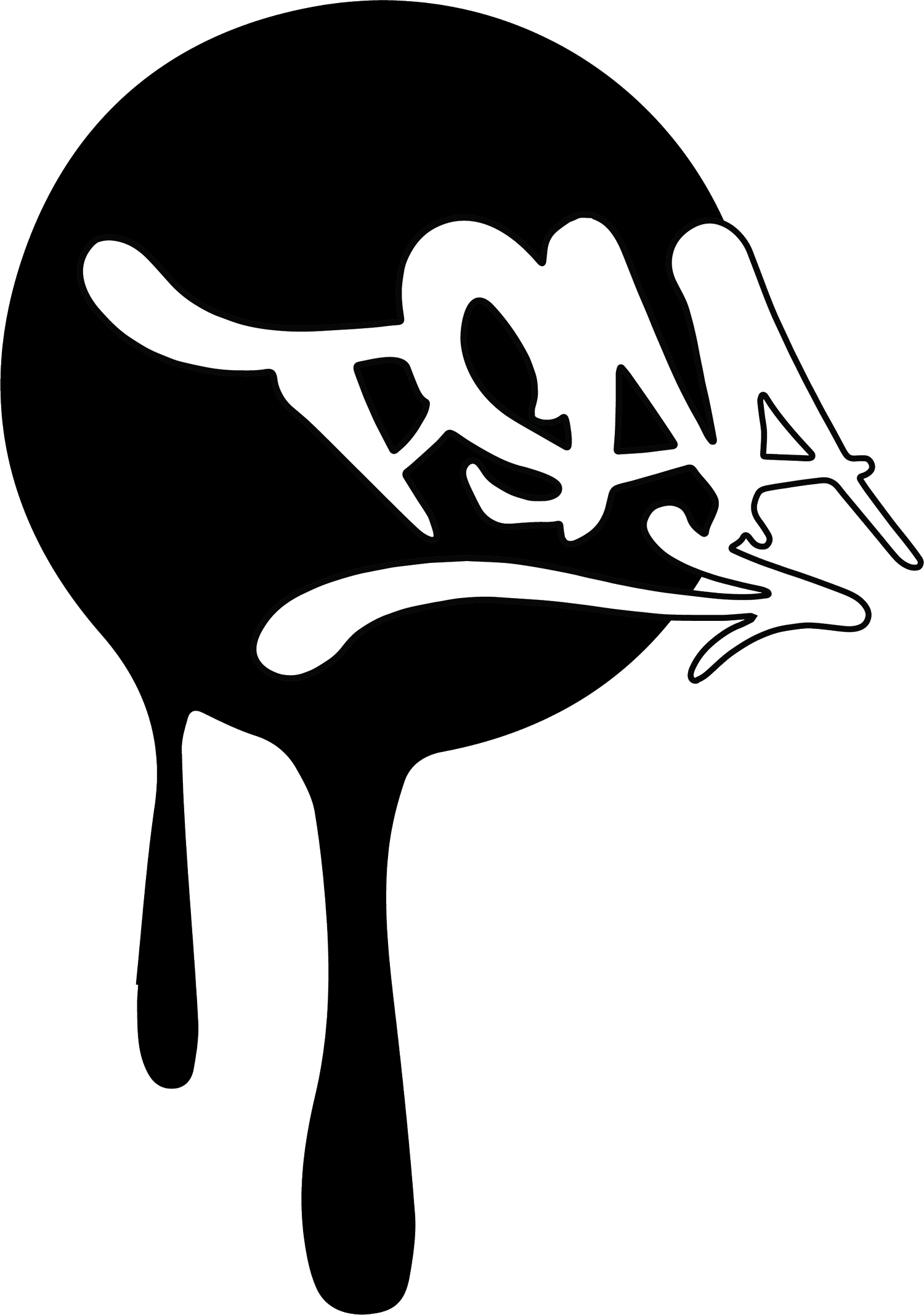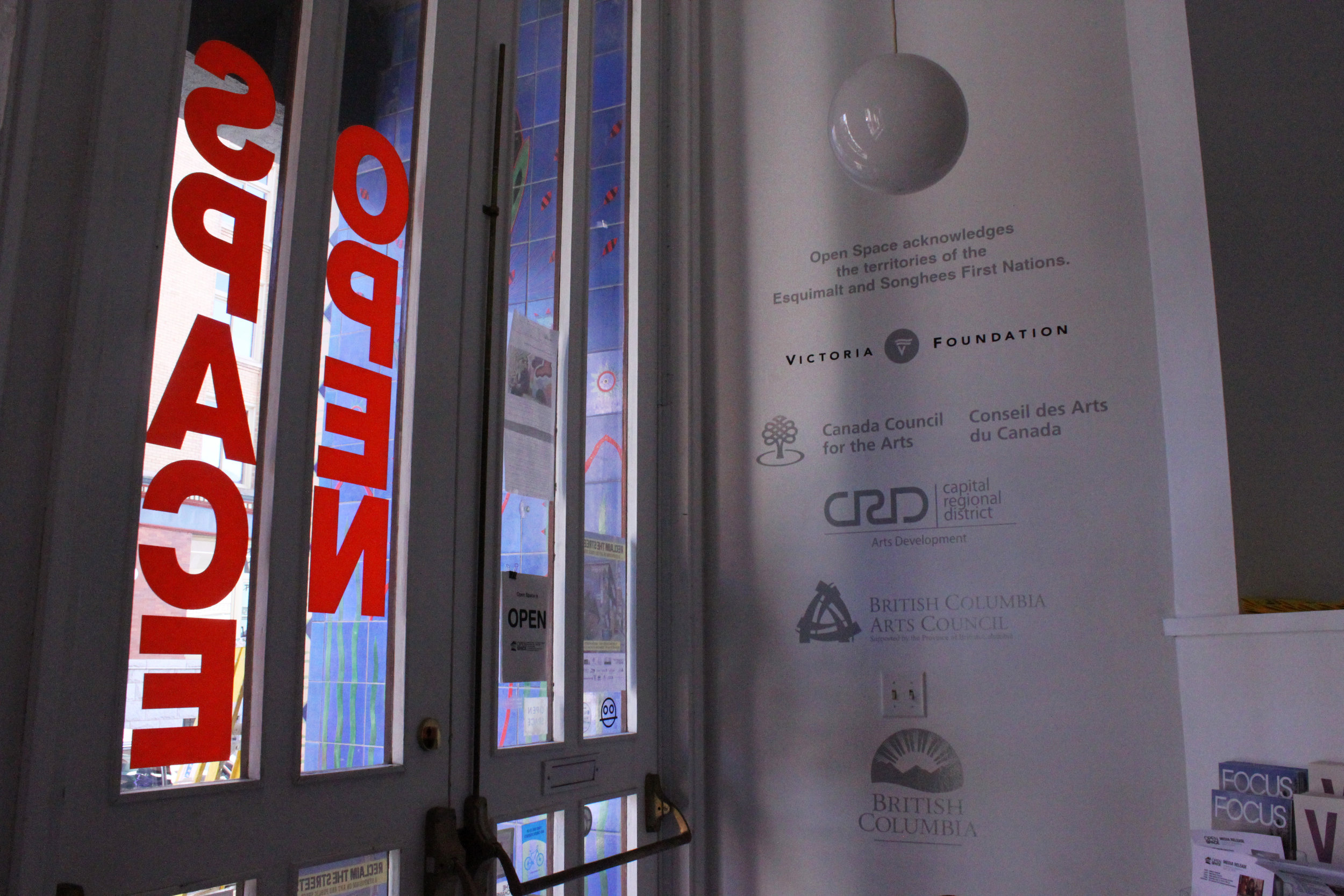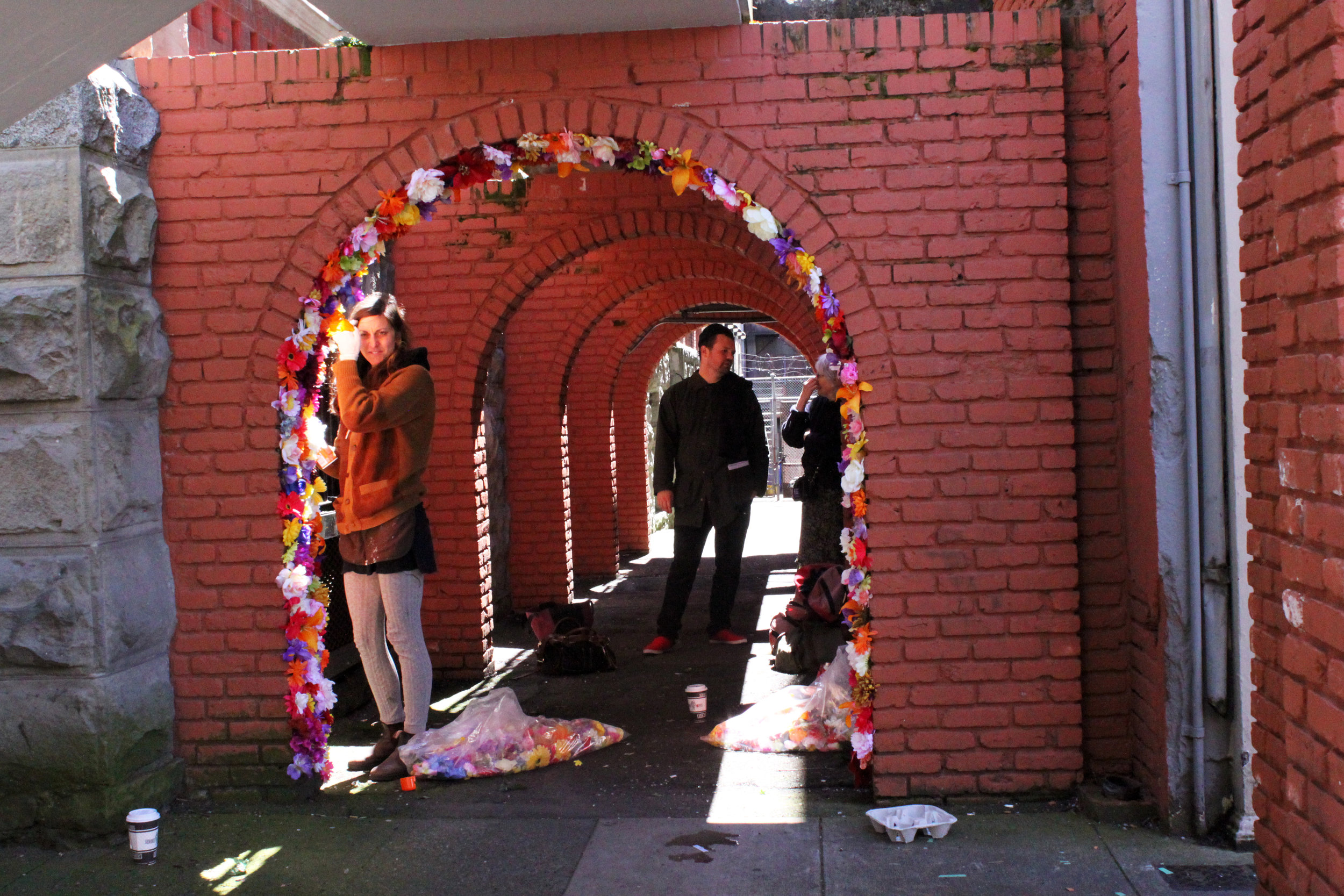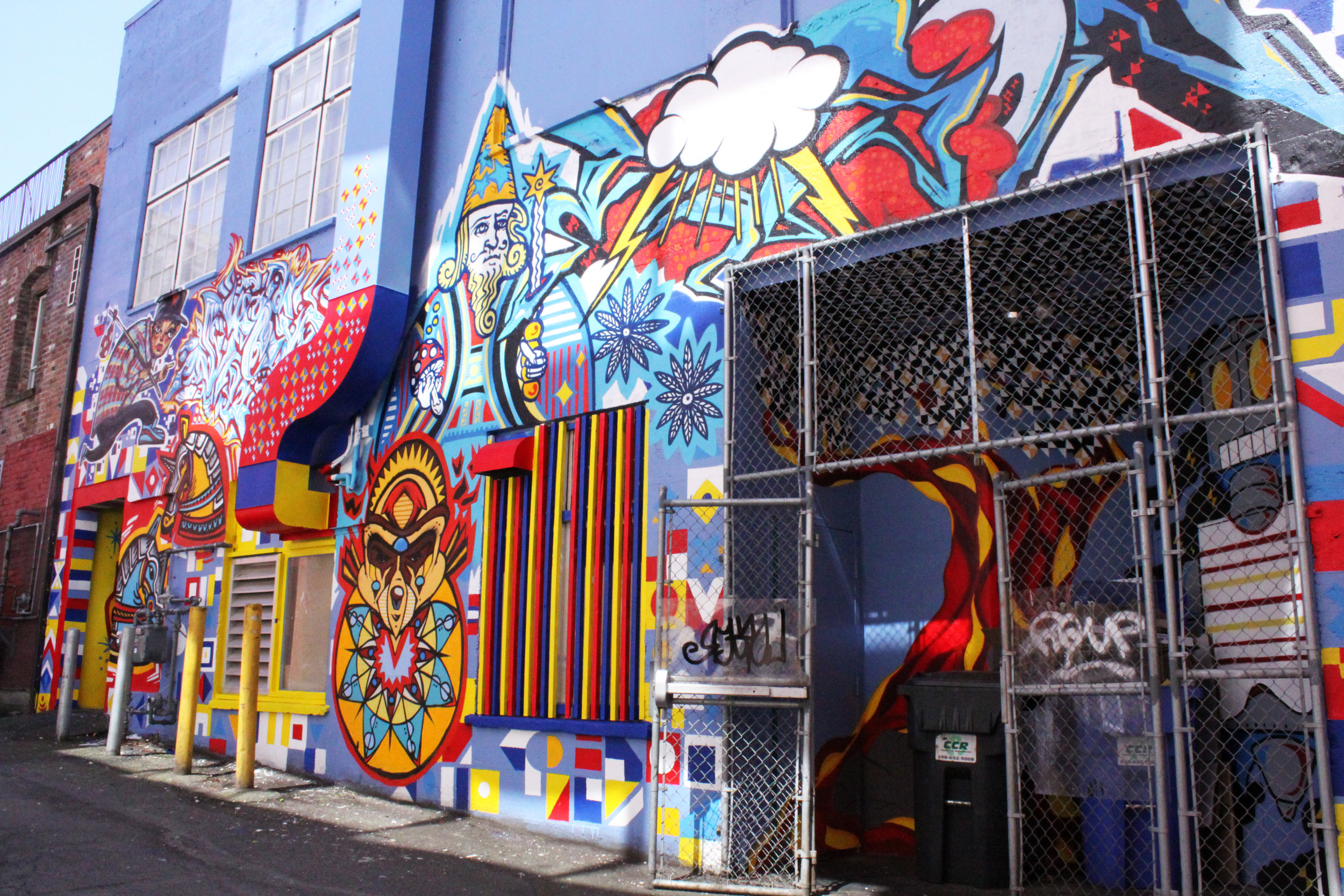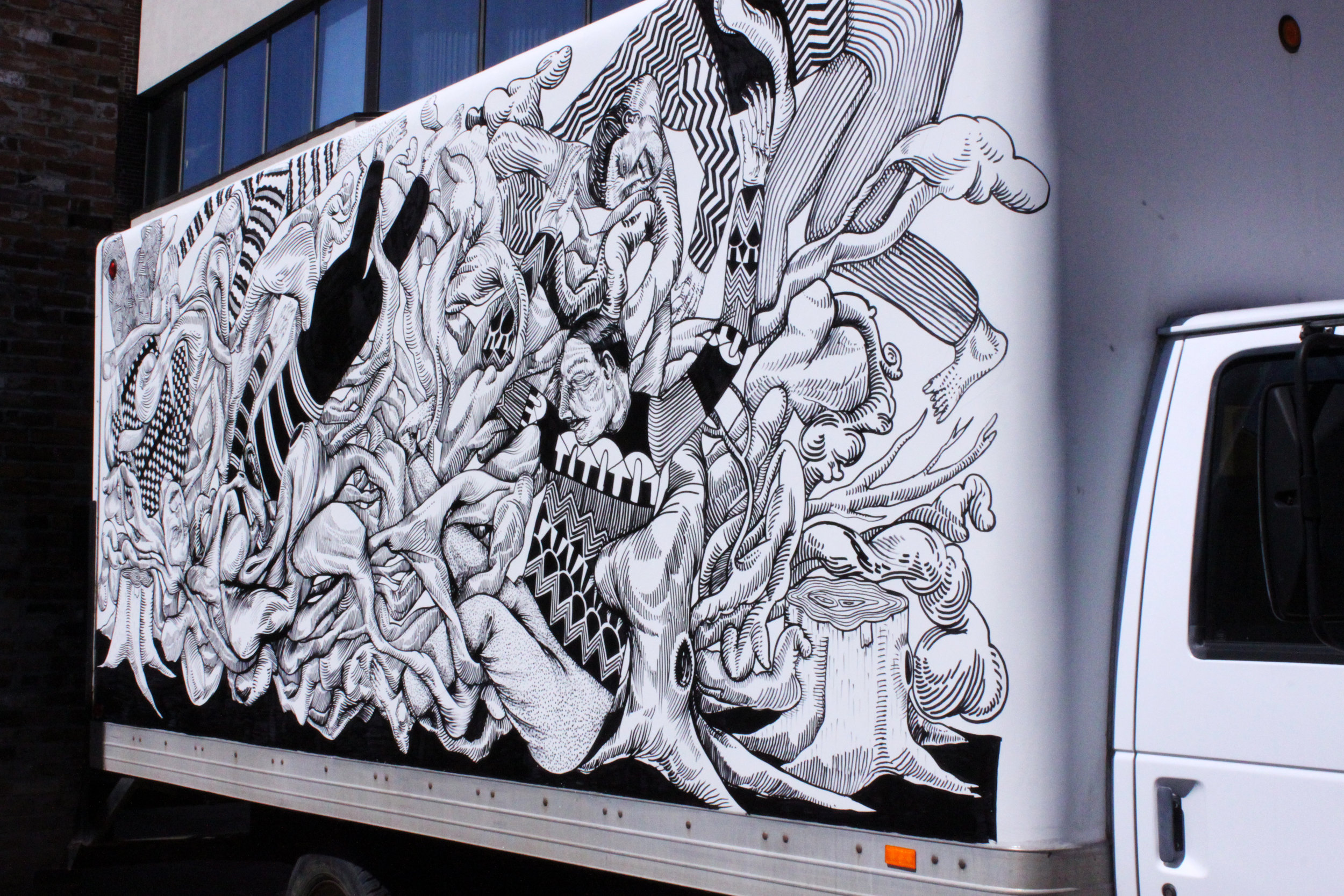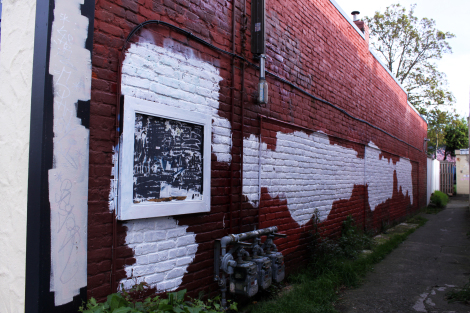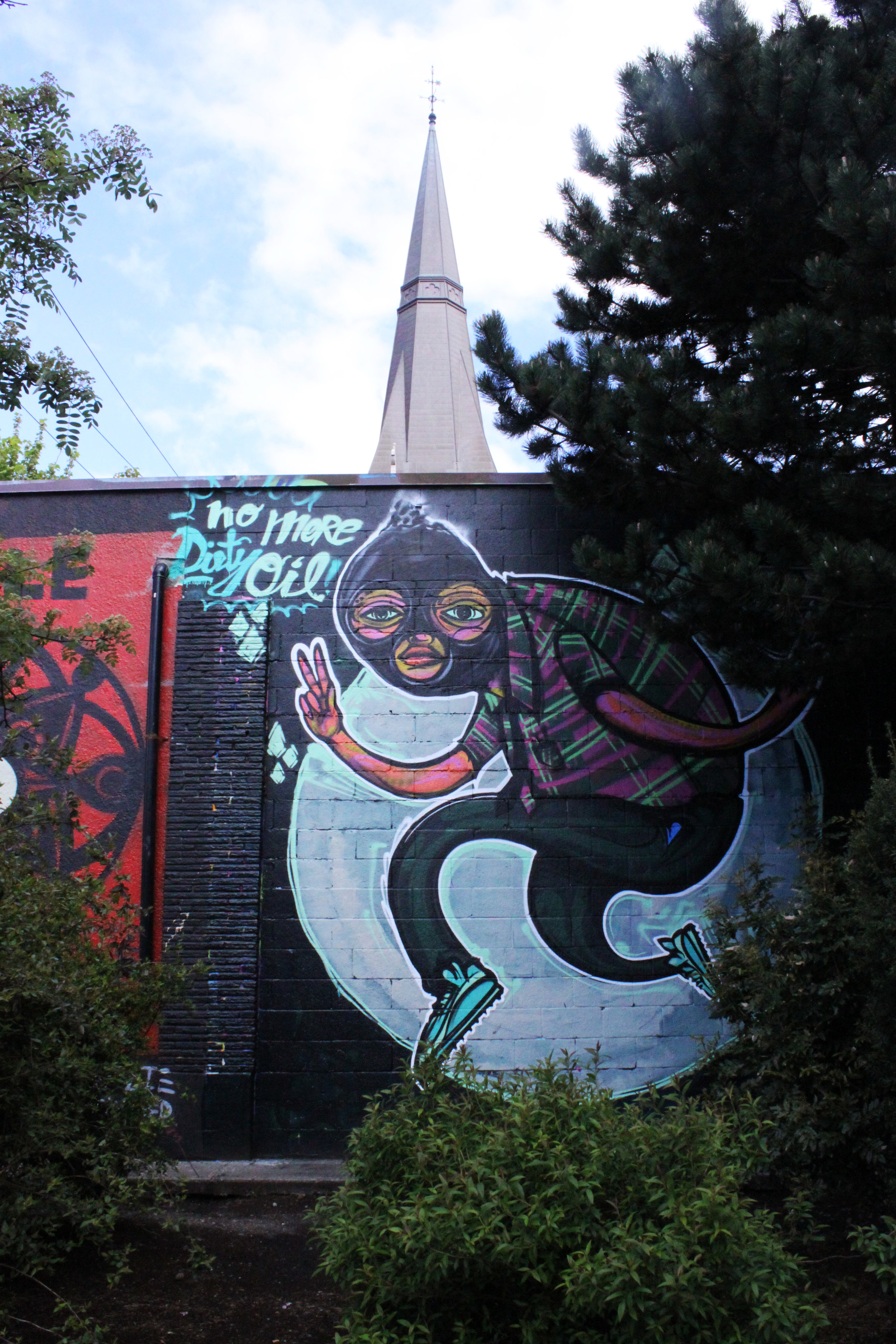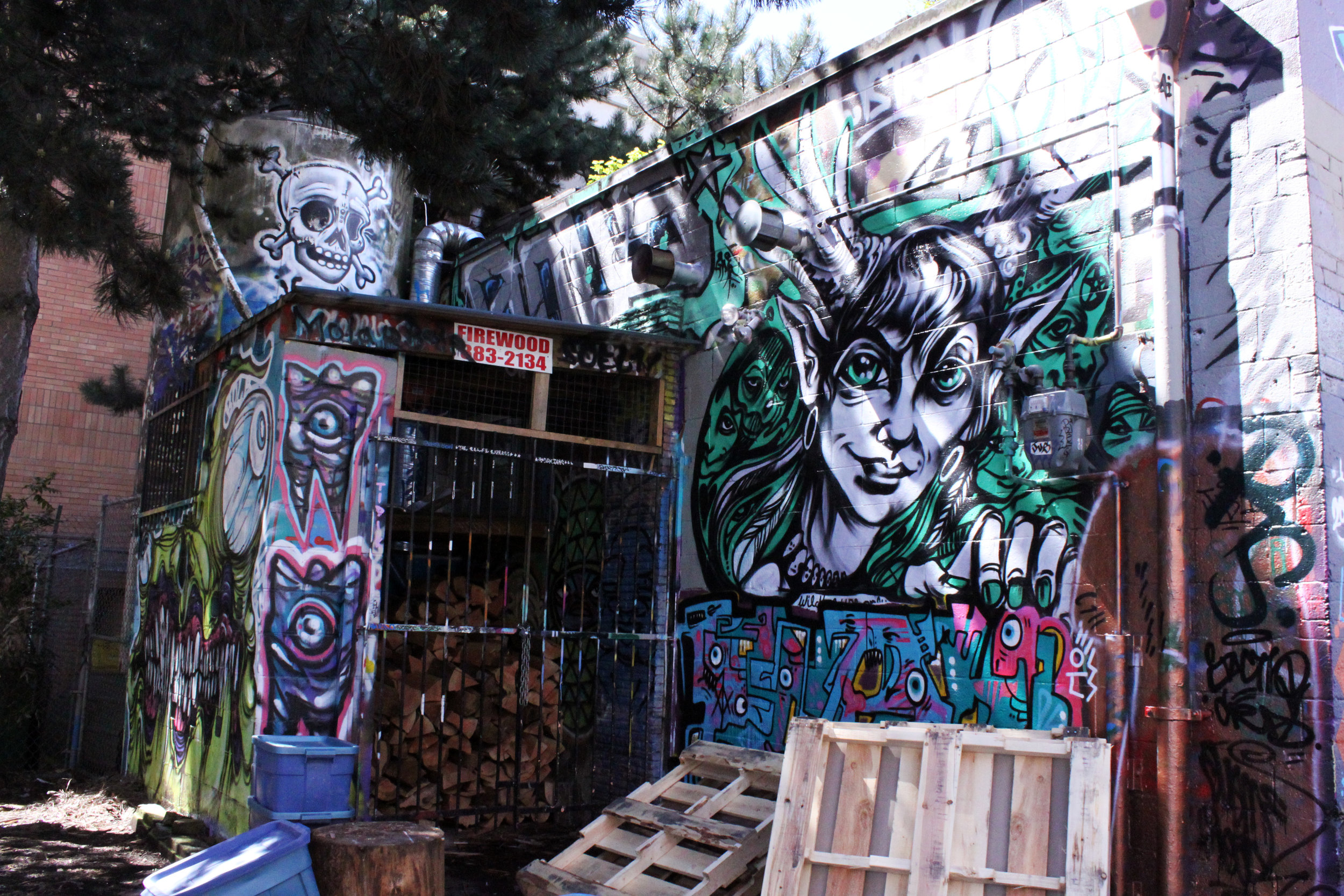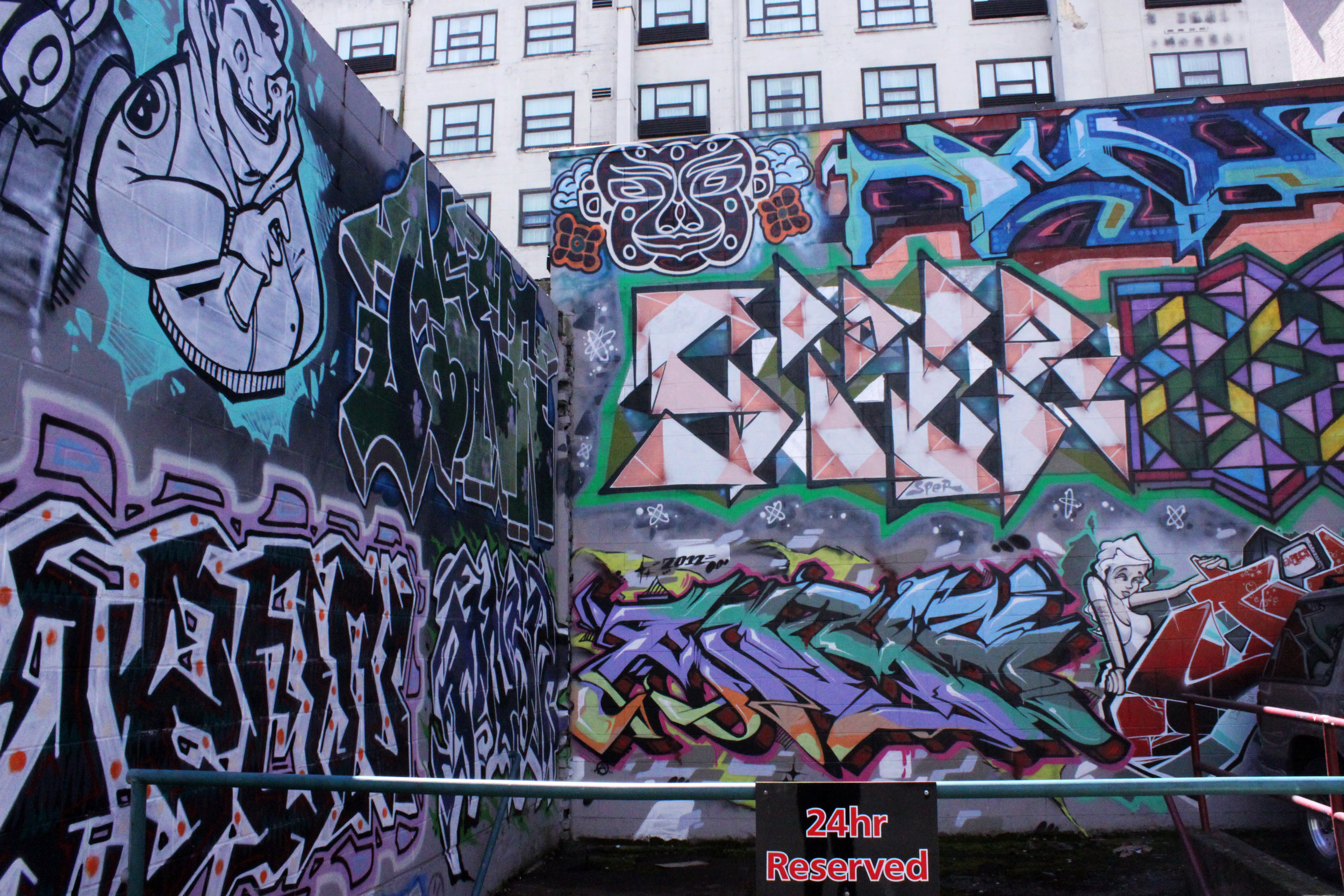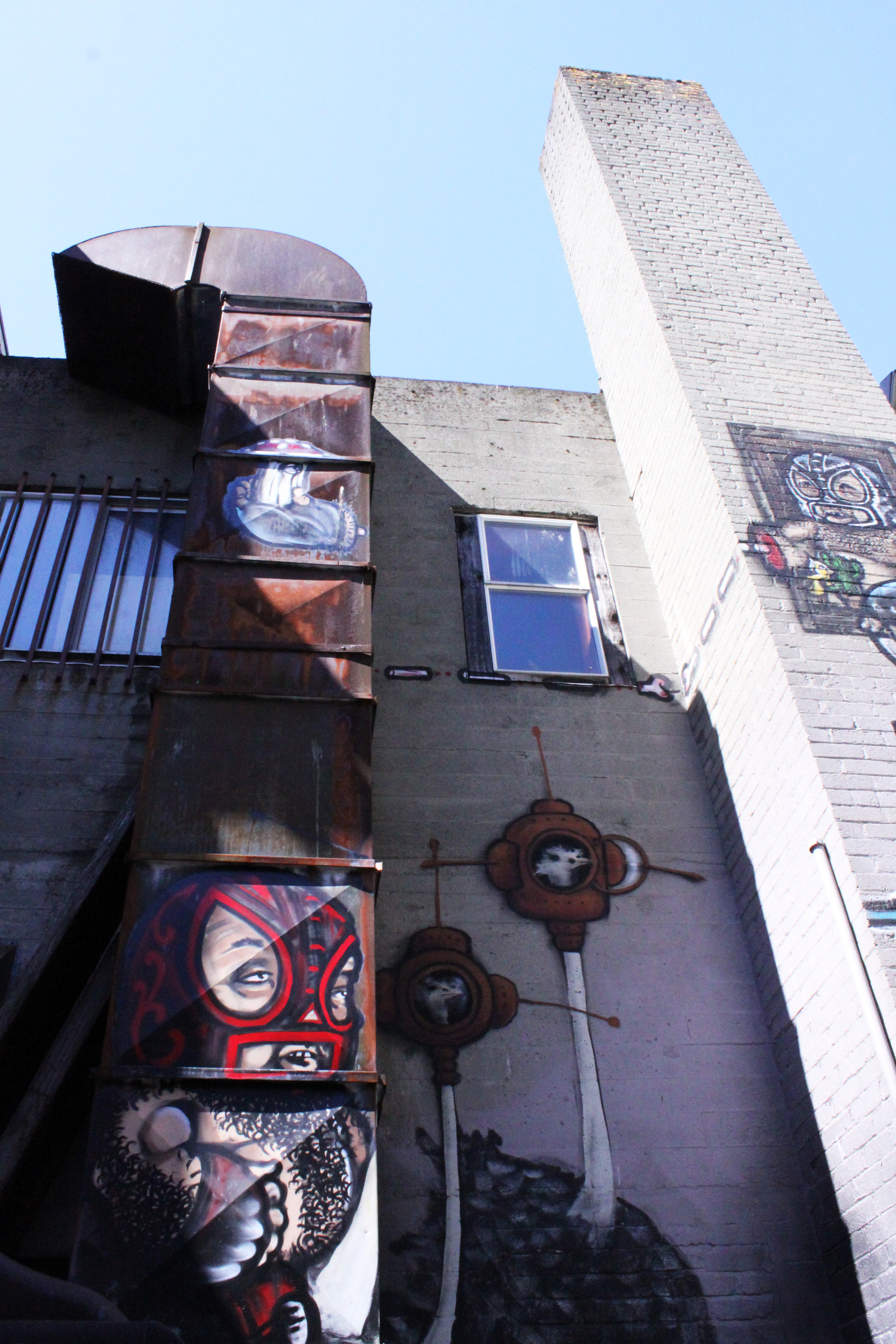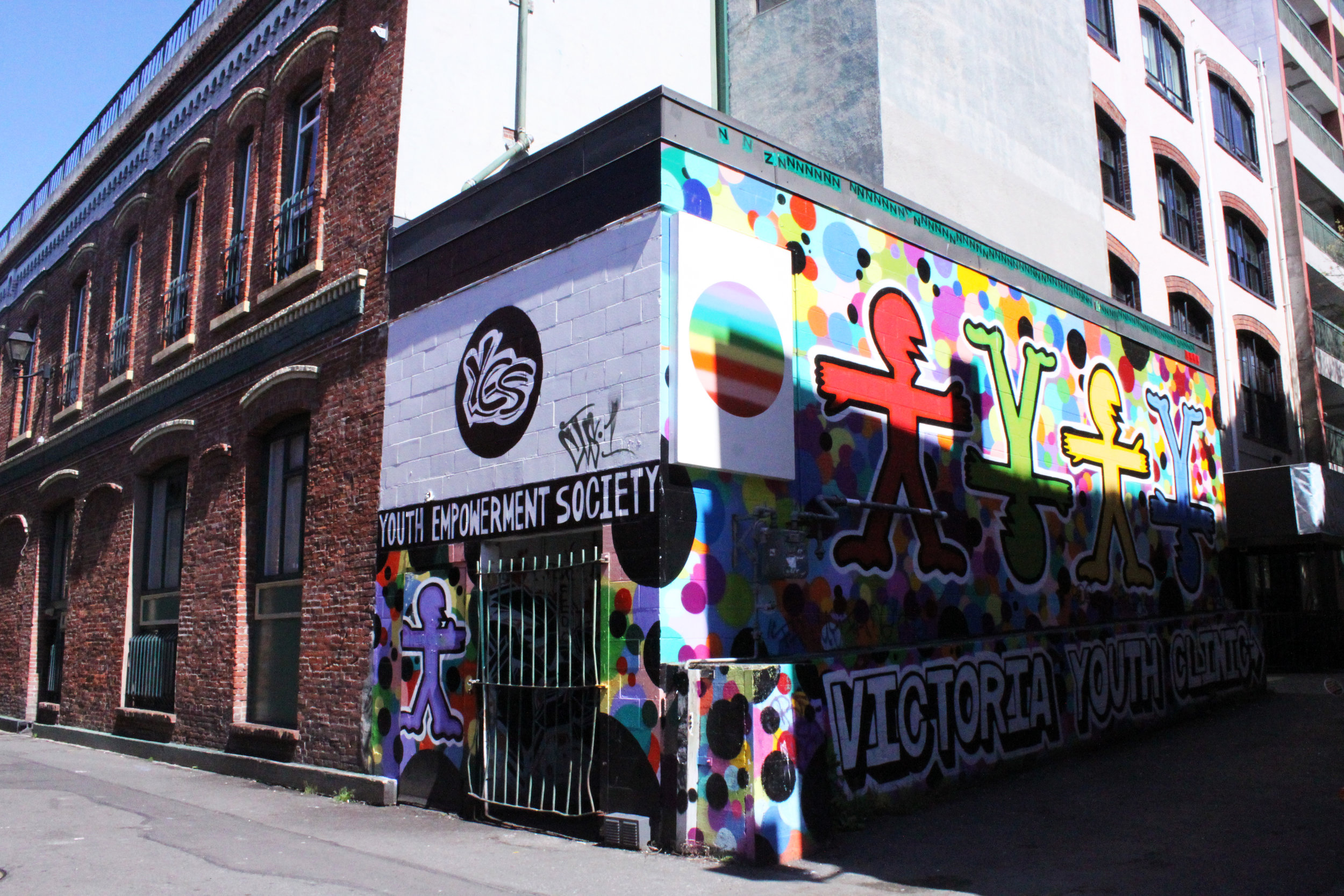Reclaim The Streets: A SYMPOSIUM ON ART & PUBLIC SPACE
PSAA Co-Director Tiffany Conklin recently moderated a panel discussion on Art & Public Space at a Symposium in Victoria B.C. The following is a report back from that event.
Founded in 1972, the Open Space Arts Society is a non-profit artist-run centre located in Victoria, British Columbia. Open Space supports artists who utilize hybrid and experimental approaches to media, art, music, and performance. In April 2014, Open Space hosted a two-day symposium that brought together artists, scholars, curators, activists, city officials, community organizations, and engaged citizens to examine the goals, perceptions, problems, and possibilities of unsanctioned public art. This free and public symposium also featured presentations and a series of round-table panel discussions to encourage audience involvement and participation in these important conversations. The symposium was generously sponsored by the City of Victoria and the Art Gallery of Greater Victoria.
Open Space Assistant Curator Sara Fruchtman and local artist-in-residence Cameron Kidd organized this local and international community event. The symposium was the final finale of Kidd’s 10 month residency at Open Space. During this time, he’s helped to create 3 murals, and a variety of projects that addressed the need for youth engagement and more publicly accessible sites for street art in the city.
Kidd and Fruchtman just successfully pitched a new project to the city – turning Commercial Alley behind the centre into a new city-sponsored mural zone, the first of its kind in Victoria.
Key note speaker Barbara Cole, the director of Other Sights for Artists’ Projects presented examples of how artists she works with are resisting, reinterpreting, and reinventing the ways in which our cities’ public places are experienced. In 2010, Other Sights curated a piece of public art by Folke Koebberling and Martin Kaltwasser, two Berlin-based artist who built a compostable bulldozer in empty lot about to be developed in Vancouver B.C.
The first panel discussion focused on the various types of spaces in the city: public, semi-public, and private space. On the panel was: art activist Kika Thorne, geography professor Reuben Rose-Redwood, sculptor Mowry Baden, and the founders of the The Wayward School, Stefan Morales and Heather Cosidetto.
They discussed questions like: What is public space? Who has the right to occupy and use these space? Do all members of society have access to it? What should public spaces be used for, and not used for? Does public space need to be regulated ? If so, by whom? Can public space be community-managed? If we spaces completely open for any use, then how do we govern our relations within those spaces? How do we sustain a shared and safe space, and prevent a tragedy of the commons?
The second session focused on public art and youth engagement, specifically the ways in which communities can support youth in becoming more positively engaged with public space, especially when it comes to art practices. The panel included Sue Donaldson of the BC Arts Council, Haida artist Sacha Ouellet, Tla-o-qui-aht wood carver Hjalmer Wenstob, and theatre director Will Weigler.
Katrina Thorsen provided examples from her 10 years of experience as a therapeutic art facilitator. Similar to alcohol and drug addiction therapy, Thorsen uses street art as a therapeutic practice for at-risk and traumatized youth. She’s found that community-based street art can be used as a highly effective tool of empowerment, helping youth integrate themselves into public life, build confidence, strengthen community support structures in an active, positive, and supportive ways. Thorsen found that providing youth public spaces to express themselves in helped them find their ‘voice’ and feel like they are be heard.
Next up was the screening of 100 Layers of Beige, a local documentary directed by Kay Gallivan (VIPIRG) and Zsofin Sheehy (Wandering Eye Media). The film focuses on Trackside Gallery and the conflicts that led to the end of one of Canada’s largest graffiti walls.
100 Layers Beige Trailer from Zsofin Sheehy on Vimeo.
The final session focused on exploring the differences between sanctioned and unsanctioned street art. Panel participants included street artists Cameron Kidd and “Other” (Troy Lovegates), the City of Victoria Arts and Culture Coordinator Nichola Reddington,Erika Heyrman the owner of Wildfire Bakery and a local free wall, and Tiffany Conklin of the Portland Street Art Alliance.
This last panel explored topics like: Why are some forms of unsanctioned interventions (often called street art) more socially acceptable than letter-based graffiti? What are the differences and similarities between these practices? Both are often illegal, but are both always vandalism? The panel also proposed ideas on how communities can support the types of artistic interventions they want to see. Rather than criminalizing, dictating, and suppressing, instead asking: how can we collectively manage, compromise, and improve the quality and vibrancy of our streets?
Although many insights arose, a few key ideas seemed to resonate with the crowd. Some called for more action against the overabundance of advertisements in the city. Saying, that this type of visual pollution is often tolerated and ignored, only because it is backed by capital. Graffiti is no different than ads, except that it is free and springs from the grassroots. Additionally, advertisers are not easily regulated since they have strong legal teams and lobbyists. They can promote with impunity, regardless of the negative effects campaigns may have on our physical and mental spaces.
The quality and accessibility of a city’s public spaces are a true reflection of the quality, commitment, and vibrancy of the communities that live there. The peopleof the city are in control of it’s public spaces. However, this right to the city can only be realized if we have an active and empowered citizenry. Rather than being complacent or passively complaining about something, we need to act, sometimes alone, but more effectively, as a diverse group working from all angles towards a common goal.
Sharing experiences and ideas (even if conflicting) is one of the best ways to generate new solutions and approaches. Having safe social spaces where we can all communicate and be heard, regardless of our power, money, or status in the community, is the primary objective. Pubic space is the original and only true democratic arena, however, it can only serve this role if people consistently occupy it and communicate with one another about the pressing issues of their time and place. We are the city, and the city is us.
